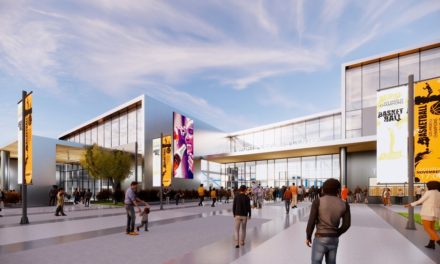From Sustainable Cities Collective:
The City of Baltimore is in dire need of new residents. Mayor Stephanie Rawlings-Blake appears to have her sights on so-called “new Baltimoreans” to fill the city’s empty houses. Baltimore’s current population of 621,342, while a spirited group, is not enough to support the services provided by the City. Gaining new residents via immigration has been relatively easy for Baltimore, but losing greater amounts of domestic residents has proven easier. Thus, retaining residents is just as important as gaining new ones, and identifying why people leave is a major first step.
Growing Baltimore’s population has been a goal of Mayor Rawlings-Blake since she came into office in 2010, and the publication of Change to Grow has attracted new attention to the initiative, especially after reports revealed population growth of over 1,100 in 2012. Adding to the good news, Baltimore recently received praise for its outcomes based budgeting, allowing for focus on outcomes in the realms of education, safety, health, sustainability, and innovation. The hopeful outcome of the Change to Grow Initiative is for the presence of new residents to reduce blight, the resident tax burden, and chronic budget deficit.
As is stated in Change to Grow, “Baltimore is now at an inflection point,” or at least it hopes to be within the next ten years. A change in direction, away from blight and away from decline, will require a swift push with just the right amount of force. Baltimore’s planned “push” is to start off with a near fifty cent drop in the property tax assessment rate, followed by smaller but steady reductions each year. If a reduction in property tax brings in more residents, the City will maintain a decent revenue stream for infrastructure. If the desired population growth is not achieved as property tax rates decline, Baltimore risks losing out on some much needed revenue.
Many speculate on reasons why attracting and retaining residents has been so difficult. Crime, corruption, high tax rates, and blight are used to criticize the city and the Mayor, but the City is working with both public and private organizations to research the decades of decline in hopes of identifying potential solutions. In the meantime, it’s doing what it can to lay groundwork for stronger communities. Baltimore is simultaneously trying to improve distressed neighborhoods while keeping middle-market neighborhoods from tipping into distress. Both types of neighborhoods suffer from population loss and high vacancy rates.
With that said, the city can be viewed as both a nightmare and a playground for urban planners. There’s plenty of fruit to pick from to design a thriving new Baltimore, but at times it seems that only the low-hanging fruit is being grabbed. Baltimore loves a good opportunity to shock the nay-sayers, but so far improvements have only come in pockets around the city: a community garden here, a bike path there, flowing sewage elsewhere…
An imbalance of positive growth in specific neighborhoods brings up a dirty word: gentrification. So how will Baltimore improve the lives of some residents without alienating others? If existing residents lose their identities within their communities and within the city, they are likely to feel alienated, and they are then likely to leave or be displaced. If the cycle of a shrinking tax base continues, will Baltimore lose the coveted opportunity to say “we told you so?”





